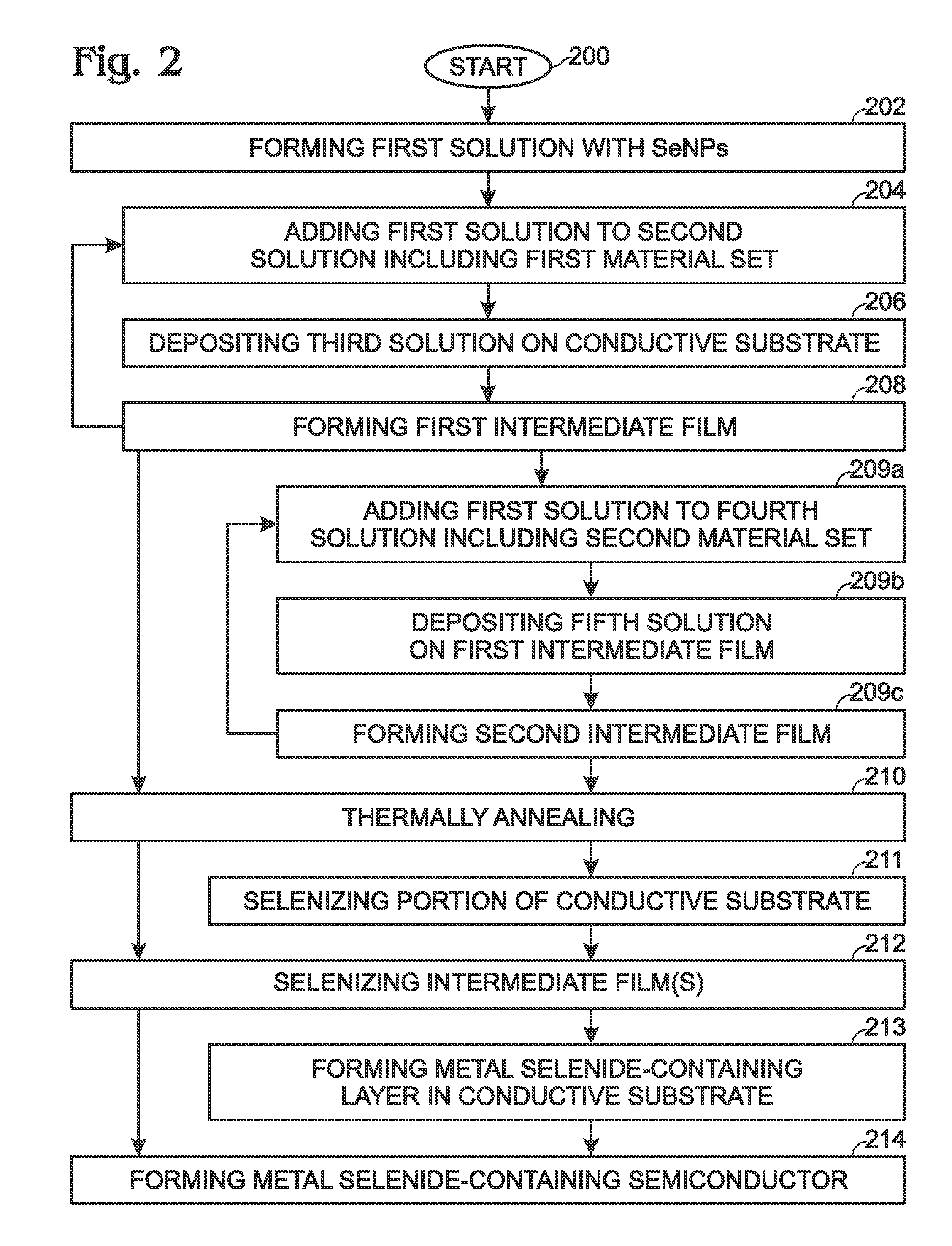Solution-Processed Metal-Selenide Semiconductor Using Selenium Nanoparticles
a technology of selenium nanoparticles and metal selenide semiconductors, applied in the field of metal selenide semiconductor film formation using selenium nanoparticle solutions, can solve the problems of high toxicity and reactivity associated with hydrazine, selenium loss, and resultant cigs film as selenium deficient, so as to reduce cigs film contamination, and reduce the effect of macromolecular or poly
- Summary
- Abstract
- Description
- Claims
- Application Information
AI Technical Summary
Benefits of technology
Problems solved by technology
Method used
Image
Examples
Embodiment Construction
[0035]FIG. 1 is a flowchart illustrating steps in a method for forming a solution-processed copper indium gallium diselenide (CIGS) absorber using selenium (Se) nanoparticles (NPs). Although the method is depicted as a sequence of numbered steps for clarity, the numbering does not necessarily dictate the order of the steps. It should be understood that some of these steps may be skipped, performed in parallel, or performed without the requirement of maintaining a strict order of sequence. Generally however, the method follows the numeric order of the depicted steps. The method begins at Step 100.
[0036]Step 102 forms a first solution including SeNPs dispersed in a solvent. Step 104 adds the first solution to a second solution including a first material set. The first material set may be comprised of metal salts and metal complexes of copper (Cu), indium (In), gallium (Ga), or combinations thereof, dissolved in a solvent. The result is the formation of a third solution. Step 106 depos...
PUM
 Login to View More
Login to View More Abstract
Description
Claims
Application Information
 Login to View More
Login to View More - R&D
- Intellectual Property
- Life Sciences
- Materials
- Tech Scout
- Unparalleled Data Quality
- Higher Quality Content
- 60% Fewer Hallucinations
Browse by: Latest US Patents, China's latest patents, Technical Efficacy Thesaurus, Application Domain, Technology Topic, Popular Technical Reports.
© 2025 PatSnap. All rights reserved.Legal|Privacy policy|Modern Slavery Act Transparency Statement|Sitemap|About US| Contact US: help@patsnap.com



